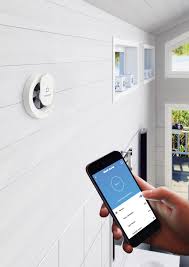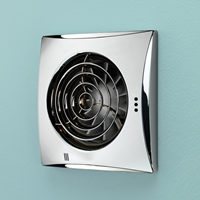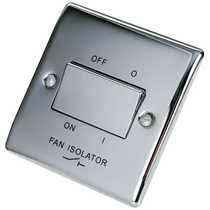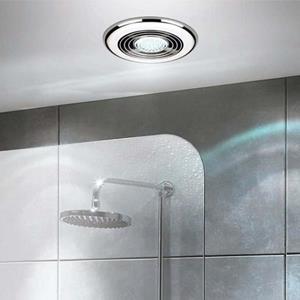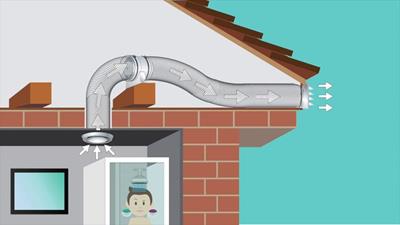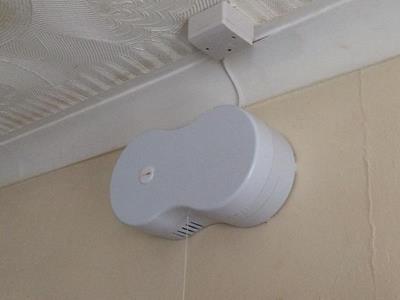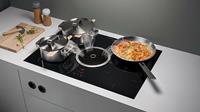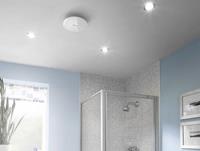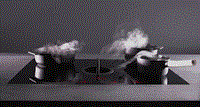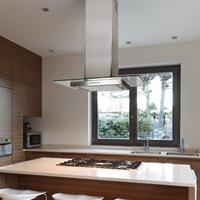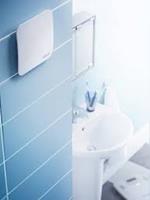Extractor Fans, Ventilation & Humidity Control
In times gone by, older building practices often allowed vents in rooms, even where they have been removed or blocked up, older construction techniques often allowed a small level of ventillation all the time. New properties and modern building practices in extensions and conversions now often attempt to seal most sources of free air movement to outside to imporve energy efficiency (which in itself is no bad thing) and air pressure tests to check the leakage on a fully closed up home have to be low enough to pass stringent requirements. This can lead to stale, damp air which if not managed manually by the occupants can lead to condensation and damp areas which in extreme cases will allow mould to grow on walls and in shower areas.
Poorly ventilated properties will continuously suffer with damp and mould issues if not addressed. If a damp issue is not fully resolved it will return time and time again, no matter how many times its painted over or how special the paint manufacturer tells you their product is. This will mean you having to pay for:- Re-decorating costs
- New plaster
- Cleaning solutions etc
- Replacement furnishings
- Inconvenience to you (or you & your tenants if you are a landlord)
- Wall/Ceiling mounted or duct fan - Your basic extract fan, which when correctly specified can meet building regulation specifications. A wall or ceiling mounted fan is a straightforward unit which may come on with its own switch, a movement sensor (PIR), humidistat or pullcord on the fan itself. These are great for a basic installation and get the job done. A duct fan means the motor and fan blades are mounted in a box which is placed in a loft space or service void, a grille in the room to be venillated allows air to be sucked into the fan and is pushed out a large pipe (duct) to outside where it is discharged. The advantage of the duct fan is that it can be larger as it is not visible, allowing larger volumes of air to be moved quietly. We have been asked if its working when demonstrating to a client as it was almost inaudible, yet was 3x more powerful than a ceiling mounted fan of a similar size.
- Mechanical Heat Recovery (MVHR) - is often a whole house ventilation system but can be a single fan unit for a problem area that both supplies and extracts air. Heat recovery allows the heat to be saved from waste air and added to the cooler incoming air thus reducing heating costs.
- Positive Input Ventilation (PIV) - Works by encouraging the movement of air from inside to outside from a unit that is usually installed in a loft. These units reduce or eliminate surface condensation altogether by replacing humid stagnant air with fresh filtered air. Input Ventilation (PIV) also sometimes known as positive pressure ventilation works as a whole house ventilation system and creates a fresh and healthy living environment by supplying fresh, filtered air into a property at a continuous rate throughout. The damp air is forced out through natural leakage of the building
- Mechanical Extract Ventilation (MEV) - refers to centralised systems which provide ventilation helping to reduce excess moisture using extraction from multiple points. MEV systems provide improved indoor air quality, protecting your home from condensation, damp and mould. This would usially be installed as part of a new build or major renovation as it requires ducts run throughout the property.
We install and repair a wide range of ventilation systems, why not get in touch to discuss what system would suit you best. We have a host of success stories where we have eliminated problems where condensation is causing mould growth, wallpaper to peel off and black marks appearing in bathroom grout and sealant joints.









